Pretty soon, Memphis and the Mid-South will be down to one bridge over the Mississippi. At least it will if the Tennessee Department of Transportation (TDOT) gets to implement its current plan.
TDOT wants to close the Memphis-Arkansas Bridge (what most Mid-Southerners call the “Old Bridge”) for nine months in 2017. Officials say the closure is necessary to expedite work on a new interchange at E.H. Crump Boulevard and Interstate 55. That new interchange is needed because the current one is unsafe and ineffective.

TDOT Commissioner John Schroer
TDOT Commissioner John Schroer calls it “the worst interchange we have in the state of Tennessee.”
But opposition to the TDOT plan is building. TDOT has fielded calls from politicians and many in the business community who are concerned that the closure would cause traffic gridlock and negatively impact the regional economy.
So far, the most visible opposition to the plan is a change.org petition from Arkansas state Senator Keith Ingram that says the closure “will devastate local economies throughout Eastern Arkansas and will cripple emergency services in the event of an accident or natural disaster.” Sources on both sides of the bridge say behind-the-scenes organizing is underway for more formal opposition to TDOT’s plan.
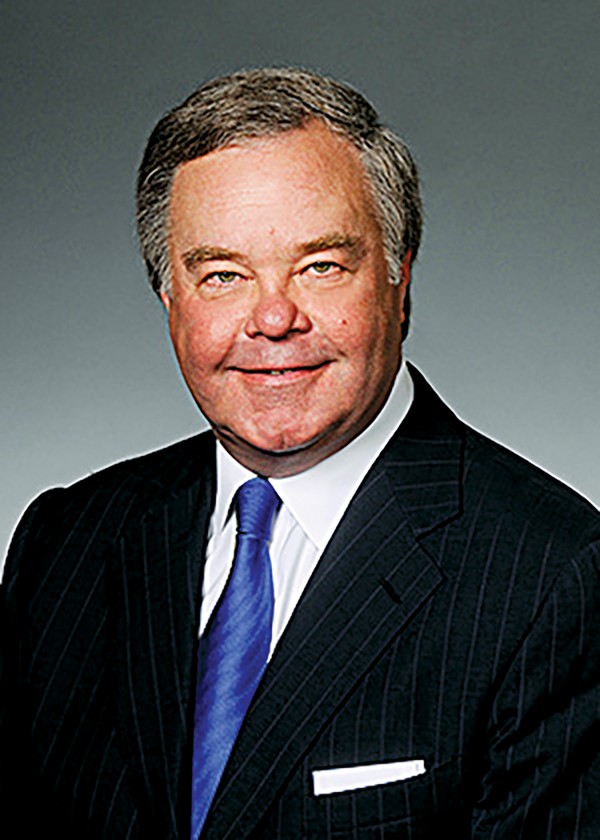
Senator Keith Ingram
Schroer says he considered another plan for the project that had a five-year construction timeline and no bridge closure, but maintains the current plan is the best, safest, and most cost-effective. Schroer says the Hernando de Soto “M bridge” can handle the traffic.
Many think Schroer couldn’t be more wrong, and the idea of limiting the Mid-South to one bridge over the Mississippi pushes their thoughts to worst-case-scenario territory.
The Plan
When asked what he thinks of closing the Old Bridge, Schroer says, “I hate it.”
“It certainly isn’t an option we wanted to pursue, but sometimes you have to look at all your options and pick what is the least evil of them all, the least disruptive for a duration of time, and what is the safest as well,” Schroer says.
Schroer says TDOT picked through a lot of plans, pointing to the fact that all considered plans were listed alphabetically and the plan on the table now is labeled Z-1.
Schroer says he made the final choice on the design and the closure, and they were “probably the toughest decisions I’ll have to make in eight years in office here.”
 Courtesy TDOT
Courtesy TDOT
This map shows the roundabout (in yellow) and the sweeping curve (in orange) of TDOT’s proposed interchange at E.H. Crump Boulevard and I-55
Z-1 will replace the current cloverleaf design at Crump and I-55 with a roundabout for local traffic and a long, elevated, sweeping curve to keep I-55 traffic flowing without slowing to (or below) the posted speed limit of 25 miles per hour.
The cloverleaf design was built in the mid-1960s. It was meant to handle 28,500 vehicles daily, with 8 percent truck traffic, according to the Federal Highway Adminstration [FHWA]. Today, traffic averages 60,330 vehicles daily with 26 percent trucks. By 2035, the interchange will see 84,500 vehicles per day, according to FHWA projections.
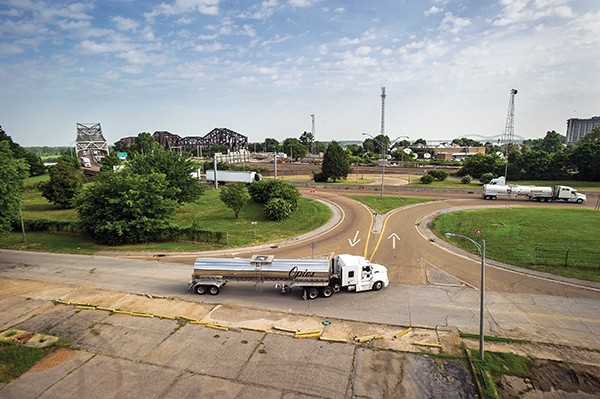 Brandon Dill
Brandon Dill
Trucks enter the current cloverleaf ramp to I-55, where interstate traffic must slow to 25 miles per hour
Local streets also directly intersect with I-55 at that interchange. “The project needs are to improve interstate safety and traffic operations by improving interstate speeds, managing heavy truck crashes and large traffic volumes, and reducing overall crashes,” an FHWA statement says.
Crash data specific to the Crump/I-55 interchange were not available. But data for the Tennessee stretch of I-55 show 851 total crashes between 2009-2011. Of those, there were five fatalities, 196 injuries, and 650 wrecks that yielded only property damage.
The price tag for the new interchange project has grown from $35 million when it was announced in 2010 to about $60 million now. TDOT officials say the cost rose as the project was reviewed by government and construction officials. Those conversations changed construction methods, materials, and the overall design.
If the plan moves ahead on schedule, the contract for it will be opened for bid this winter.
Phase 1 construction will begin March 2016 and last through February 2017. During that time, TDOT will close the ramp for southbound Riverside traffic, which will be routed from Riverside to Carolina Street to Florida Street to Crump. Crews will build a temporary ramp for I-55 southbound and build noise walls for the French Fort neighborhood.
The ramp for southbound Riverside traffic to the I-55 bridge will also be removed, as well as the ramp for westbound Crump traffic to the ramp for I-55 South. That traffic will also be detoured to Florida Street.
Phase 2 construction will shut down the Old Bridge from March 2017 to the end of November. TDOT will keep one lane across the bridge open for emergency vehicles only during the closure.
The timing was selected to expedite the project, TDOT officials say. “We did that so we can keep this project going during the nine-month construction season of 2017,” says Nichole Lawrence, TDOT’s community relations officer for West Tennessee. “If we start in the summer, then construction will go into the winter, and there will be some dead time.”
The decision to close the bridge was made March 13th, according to the FHWA, after the Arkansas State Highway and Transportation Department (AHTD), the Arkansas and Tennessee Divisions of the Federal Highway Administration, and construction industry representatives met to discuss the project — with and without an interstate closure.
“Based on the review, the group determined that the project could not be built safely without the closure of I-55 for approximately nine months during the projected three-year construction project,” a statement from FHWA says. “The basis for closure is the limited space available to safely construct the interchange while keeping the road open.”
Paul Degges, TDOT’s deputy commissioner and chief engineer, says those construction issues relate mainly to building the sweeping, elevated curve of the new I-55 ramp. Degges says the new ramp will have to be built farther from the bridge than the current ramp, and that the large construction machinery is not safe to operate around traffic.
I-55 will be closed for an 11.5-mile stretch from the I-55/I-40 split in West Memphis to the McLemore Avenue exit in South Memphis. Southbound I-55 traffic will be detoured across the Hernando de Soto Bridge and then to I-240 Midtown, then to I-55 South near the interchange at Elvis Presley Boulevard. Northbound I-55 traffic will be detoured at that same interchange to I-240, then to I-40 West across the Hernando de Soto Bridge.
The cloverleaf will be demolished. Riverside Drive will be closed from Crump to Carolina. Southbound Riverside traffic will be detoured to Carolina, to Florida, to Crump. Crump will be closed to westbound traffic at Third Street and be detoured north or south on Third.
Phase 3 construction will last from December 2017 to November 2018. Riverside will remain closed from Carolina to Crump. I-55 will be reopened and will be running on new southbound lanes.
Phase 4 construction will last for about three months in the spring of 2019, slated to be completed by May. The project will be “open,” according to TDOT, as crews complete final paving operations.
The total construction project is projected to last three years and two months.
The Opposition
West Memphian Jim Russell is retired and spends a lot of time tending the irises at the Memphis Botanic Garden. But that may end soon.
“If TDOT’s going create all sorts of traffic problems, I’m not going to do that anymore,” Russell says. “I’m not going to get into that mess every day just to get to where I want to go.”
But Russell has bigger issues with the bridge closure. He has Parkinson’s disease and often has to get across one of the bridges for medical appointments. Last winter, he was stuck on the Hernando de Soto Bridge for hours after accidents stopped traffic on both bridges. Russell worries that if he needs immediate medical help he wouldn’t be able to get it, even with the promise of the emergency lane on I-55.
Concerns like Russell’s have been echoed by many on both sides of the Mississippi River since TDOT announced its plan. Those concerns are gaining momentum, as leaders consider the effects of the closure on individuals, businesses, and neighborhoods around the interchange and the potential broad economic impact on the Mid-South region — and the country.
TDOT is now working on an economic impact study of the bridge closure. But Phil Trenary, president and CEO of the Greater Memphis Chamber, can already put that figure in the ballpark. A post-9/11 study showed that closing all of the city’s bridges would have a negative economic impact of about $11 billion to $15 billion per year, Trenary says. The impact on business would be “significant to not only the local economy but to the national economy.”
Trenary says that closing the bridge is a recent idea, and the chamber is forming a coalition to start a formal discussion with TDOT. “We want to understand what the options are,” Trenary says. “What options can we put on the table that can achieve most of our objectives, like improving the traffic flow without closing the bridge.”
Troy Keeping, president and general manager of Southland Park Gaming and Racing, says the closure’s impact on his company could have a tax impact for Arkansas in the neighborhood of $7 million to $10.5 million. Keeping says the impact is far beyond that number, though, as he sees many Memphians shopping at the West Memphis Walmart and many from both sides of the river crossing the bridges to work and play.
TDOT’s plan is “very shortsighted,” Keeping says, and can likely be done without a closure, much like the current road project underway at the I-40/I-240 juncture.
“[TDOT has] kept that [section] open during the entire construction period, and there are large amounts of traffic through there,” he says. “[TDOT has] been able to reroute the traffic, and they should do the same thing on [the I-55 interchange project].”
“It’s going to cause great inconvenience to a lot of people,” says 9th District Representative Steve Cohen. “It will create traffic problems for Memphians who use the expressway either in Midtown or going downtown. It’s going to really clog it up and make traffic difficult — unbearable — for a long time.”
Schroer told Cohen that closing the bridge was the only way forward on the project. Cohen says he asked Schroer to at least expedite the work.

Jim Strickland
Jim Strickland, Memphis City Council member and a candidate for Memphis mayor, said he had not yet talked with TDOT as of last week but was skeptical that the bridge has to be closed. Other interstates aren’t shut down for months at a time for repairs, he says.
“At a minimum, TDOT needs to fully explain their current position,” Strickland says. “Why do we need to shut the bridge down? Is there no other way to design the interchanges? I have not heard these answers.”
The Wait-and-See Crowd
FedEx Corp. spokesman Jim McCluskey says his company is keeping an eye on the project.
“We are working with local and state officials to assess the effect of the bridge closure and evaluate alternate routing options that will lessen the impact for transportation carriers,” he said in a statement. “FedEx is focusing on and committed to providing the best level of service possible to our customers during this major infrastructure project.”
Lauren T. Crews, managing partner of City South Ventures, has been working for years to transform the abandoned U.S. Marine Hospital in the French Fort neighborhood into a multi-use residential and retail campus. He says he likes the interchange’s current design, but he wishes that TDOT had not announced changes to it years ago.
“When some entity comes along and announces that they’re going to do something but they don’t do anything, it just sort of shuts you down; there’s no progress that can be made,” Crews says. “It shuts the entire community down, as far as any improvements to be made. You can’t borrow money. You’re not going to find investors who are interested if they don’t know where the road systems are going to be.”
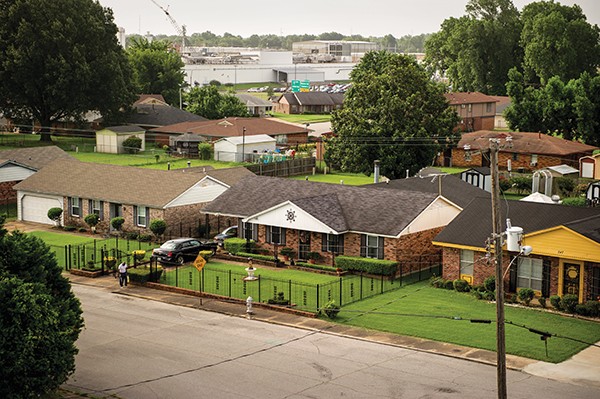 Brandon Dill
Brandon Dill
French Fort neighborhood
Crews say the situation has led to a decay in the French Fort neighborhood. Blight has claimed many buildings, and property values have declined. He sees brighter days ahead for the neighborhood with the coming of the roundabout, which would connect French Fort to downtown. “When you come into this community — if you can get the roundabout done — it may not look like Beirut over here,” Crews says.
The Supporters
Memphis Mayor A C Wharton says he is satisfied TDOT has done due diligence on the project and that they’ll do everything possible to minimize the impacts of the closure.
“I am looking forward to the completion of this project, because it eliminates one of the city’s last ‘malfunction junctions’ on our interstate highways,” Wharton said in a statement. “While the closure will be inconvenient, it’s only temporary, and the benefits of this project are far-reaching and long-term.”
Shelby County Mayor Mark Luttrell says the closure will be inconvenient but that the project’s time has come. “It’s something that has to be done, and this is the best option we have,” Luttrell says. “To extend it over a multi-year period would be a mistake. We just need to move on with it and close it down.”
U.S. Rep. Stephen Fincher says infrastructure projects have allowed Memphis to become a leader in transportation and that he commends Tennessee Governor Bill Haslam for making the investment in Memphis.
“I am confident that TDOT will do everything in its power to ensure this project is carried out as smoothly and as safely as possible,” Fincher said in a statement.
Traffic City
Tony Bologna, a Memphis architect and developer, said he dreads those nine months when the bridge is closed in 2017.
“It’s going to cause a big overload on the M Bridge if you divert everything that way,” Bologna says. “If there’s a minor accident on that bridge now, traffic is already backed up for miles.”
Transportation consultants CDM Smith studied the new interchange project and said closing the bridge will add 46,850 new vehicles daily to the Hernando de Soto Bridge, for a total of 81,220 vehicles. Along Midtown I-240, the group said the I-55 bridge closure will add around 40,000 new vehicles, increasing daily totals to around 132,000 vehicles.
But TDOT officials say I-40 and I-55 will look much different (and traffic there will run much more smoothly) on the Arkansas side by the time the Old Bridge is closed. Traffic capacity there has been reduced for years by a seismic retrofit project by the FHWA, and by I-40 improvements that led the Arkansas Times to wonder, “Will Interstate 40, between North Little Rock and West Memphis, be under construction forever?”
TDOT’s Jane Jones, director of project development, says, “We’ve been working with the ASHTD, and we’ve had assurances that their work will be completed [before the bridge is closed] and the seismic retrofit project will be completed. And we’ll have system improvements along the detour route before all that takes place.”
Where It Stands
TDOT Commissioner Schroer says the five-year plan with no closure was not as safe, not as efficient, and “financially a horrible option.” In that scenario, the bridge would be open with one-lane traffic headed in both directions. Roadblocks and temporary closures would be the norm, Schroer says, as equipment and construction materials are moved in and out of what would be an open construction site.
Schroer points to the project’s road-user cost number, a standard measurement in the road-building industry to define the cost of projects for drivers based on gasoline costs, loss of productivity, lost wages, and more.
The five-year, non-closure plan has a user-cost of $871 million, Schroer says. He says the three-year project with bridge closure will have a user-cost of $350 million.
Asked if there was anything anyone could do to change his mind on closing the bridge, Schroer says, “It’s not a case of changing my mind. It’s about making the right decisions, and, in this case, we made the right decisions.”
Schroer says he knows Memphis motorists will probably curse his name when they’re stuck in traffic but that they’ll forget all about it when the new interchange opens up.
While the decision may be a done deal for Schroer, for many others on both sides of the river the decision process is just getting started. Some are awaiting TDOT’s economic impact study for the project and will likely use it as a springboard to begin a formal opposition process.
When told that TDOT’s decision on the closure was “final,” at least in their minds, Senator Ingram remembers another Memphis road project from decades ago.
“TDOT probably didn’t think the Overton Park expressway was going to be stopped, either,” he says.

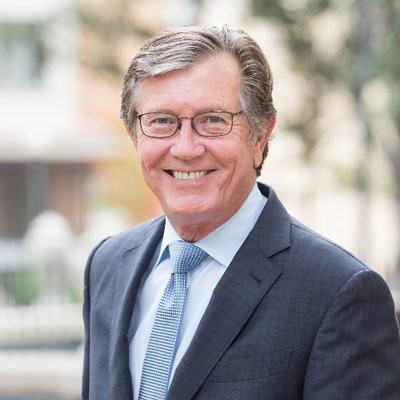 Phil Trenary/Twitter
Phil Trenary/Twitter  Shelby County Jail
Shelby County Jail  Facebook
Facebook 
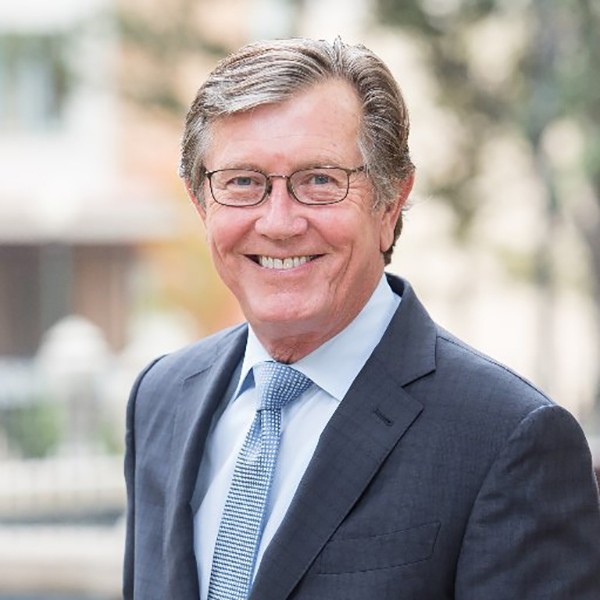
 Memphis Magazine
Memphis Magazine 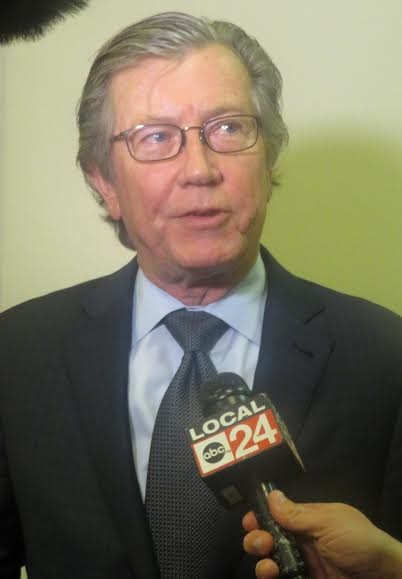 Jackson Baker
Jackson Baker 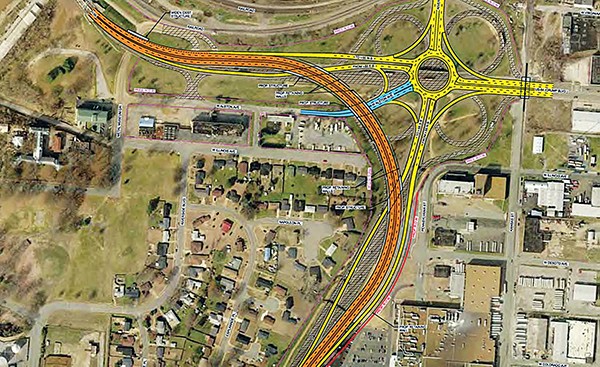


 Courtesy TDOT
Courtesy TDOT  Brandon Dill
Brandon Dill 
 Brandon Dill
Brandon Dill